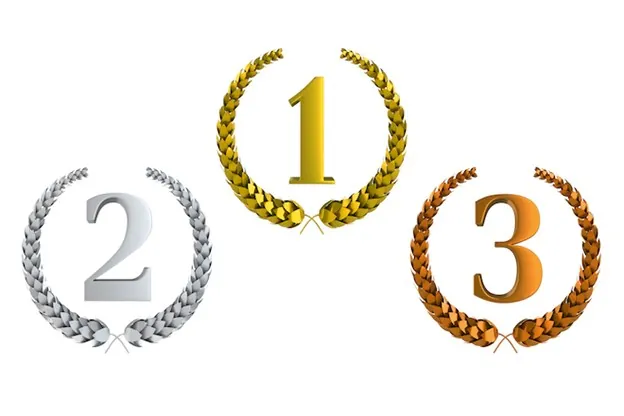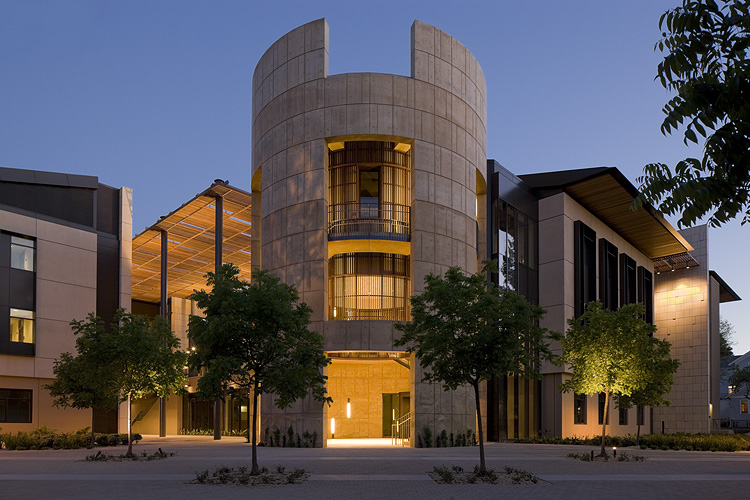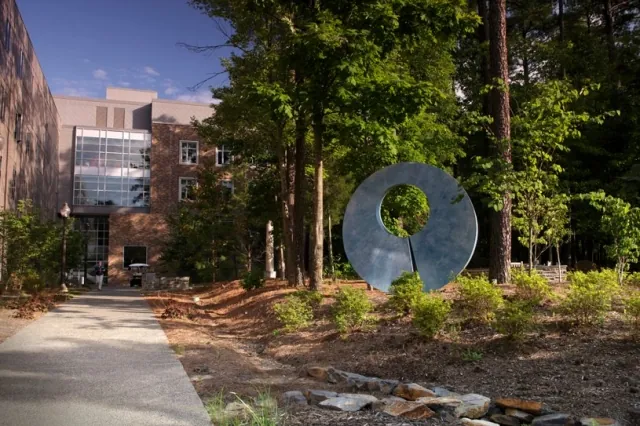 What if you produced a ranking and no one wanted to participate?
What if you produced a ranking and no one wanted to participate?
That was the predicament facing U.S. News & World Report. Over the past year, law schools have questioned U.S. News’ methodology. Ultimately, 12 of the T14 law schools boycotted the 2023-2024 ranking. Rather than cave to a mass boycott, U.S. News doubled down, modifying their methodology and relying more heavily on publicly-available data.
The result? More of the same…to an extent. For the 34th consecutive year, Yale Law remained on top. This year, it shared the top spot with Stanford Law. While Chicago Law retained the 3rd spot, Penn Law climbed two spots to rank 4th. Rounding out the Top 5 were New York University School of Law and Harvard Law, with the former gaining two spots while the latter fell another spot for the second consecutive year.
So much for shutting down a ranking…but at what cost?

Stanford Law School
METHODOLOGY GETS A FACELIFT
To compile the rankings, U.S. News relies on four categories of measures. Here are their weights in the 2024 and 2023 rankings.
2024 2023
Quality Assessment Survey 25% 40%
Placement Success 58% 26%
Selectivity 10% 21%
Resources 7% 13%
What exactly does this mean? The Quality assessment is comprised of two surveys, which assess each law school’s quality on a 1 (Marginal) to 5 (Outstanding) scale. The “Peer Assessment” survey targets law school deans, faculty chairs, academic affairs deans, and newly-tenured faculty. In contrast, “Legal Professionals” includes judges, law firm hiring firms, and practicing attorneys. Each assessment accounts for 12.5% of the ranking weight, with the Peer and Legal Professional portions losing 10% and 5% of their weight respectively in the 2024 ranking.
Placement Success – now known as “Placement Success and Bar Passage” – endured the biggest facelift. The weight of job placement within 10 months of graduation more than doubled from 14% to 33%. An even bigger change involved bar passage rate, which jumped from 3% to 18% in weight. At the same time, U.S. News inserted a new item, Ultimate Bar Passage, which measured whether 75% of graduates passed the bar within two years of graduation. This received a 7% weight. At the same time, U.S. News removed several data points from the Placement Success and Bar Passage category, including three-month job placement, average debt at graduation, and the percentage of students in debt at graduation. Combined, these removed measures constituted a 9% weight in the previous ranking.
Along with elevating the importance of outcomes to appease critics, U.S. News substantively reduced the weight of Selectively. Both LSAT and GRE Scores (5% vs. 11.25%) and undergraduate GPA (4% vs. 8.75%). This was a concession to critics like Yale Law Dean Heather Gerken, who argued that the higher weights incentivized schools to award financial aid to high performing test-takers over poor and working-class candidates who need assistance. Acceptance rate again carried a 1% weight. However, Faculty and Library Resources increased in weight, going from 3% to 7%. Notably, the student-to-faculty weight rose from 2% to 5% here.

Duke Law
THE BIG WINNERS: STANFORD, PENN, AND DUKE
While the methodology changed, the top-end results remained remarkably similar. Why is Yale Law the top school…again? Traditionally, Yale Law enjoyed a substantive advantage over its peers in LSAT scores and undergraduate GPAs. While U.S. News diluted these measures, their weights were replaced by measures friendly to Yale Law, notably bar passage rates. The school’s 98.1% bar passage rate represented a 1.7% improvement over the previous rate. This rate also remained higher than its closest competitors, including Stanford Law (97.1%). Chicago Law (97.8%), and Penn Law (96.8%). The same applies to Ultimate Bar Passage, where Yale Law’s 99% rate also bested Stanford Law (98.9%) and Penn Law (98%).
In terms of placement rate, Yale Law’s 96.8% number – while lower than eight T14 scores – still managed to nip Stanford Law (and Harvard Law as well). Let’s not forget Yale Law’s traditional strength in inputs. Posting the highest incoming LSATs (175) and GPAs (3.94) and lowest GPAs (6%) enabled the school to hold onto 1st place. That said, Stanford Law managed to close any gap it previously had with Yale Law. Notably, the school achieved the highest assessment scores given by both peer schools (4.7) and lawyers and judges (4.8). Even more, this surge came when Yale Law lost ground in both school assessments (4.4 vs. 4.8) and lawyers and judges (4.6 vs. 4.7) compared to the previous year.
Aside from Stanford Law, Penn Law also made a statement in the 2024 U.S. News Law School Ranking. It was propelled to the #4 spot thanks to its 10-month placement rate rocketing from 94.8% to 99.2%. That doesn’t count its Acceptance Rate dropping from 14% to 10%. Duke Law also grabbed attention by moving from 11th to 5th – and tying Harvard Law no less. It followed a similar path as Penn Law: boosting 10-month placement from 95.5% to 99.2%, while cutting their Acceptance Rate from 22% to 11%. That said, Harvard Law continued its descent in the 2024 ranking. Once the perennial runner-up to Yale Law, Harvard Law produced lower numbers in two categories with a 25% weight: Peer Assessment (4.6 vs. 4.8), Lawyer and Judges Assessment (4.7 vs. 4.8) – though its numbers improved nominally in 10-Month Placement, Acceptance Rate, and Bar Passage Rate. The same is true for Columbia Law, which lost .2 and .1 of a point on the Peer and Lawyer Assessments respectively while boosting its numbers elsewhere.
And how did the two T-14 schools that provided data to U.S. News do? Mixed: The University of Chicago held onto its #3 spot, while Cornell Law slipped from 12th to 13th. It’s true: No good deed goes unpunished.

University of Georgia School of Law
REASONS FOR SKEPTICISM
Outside the T14, Georgia Law made one of the biggest improvements in the 2024 ranking, rising nine spots to break into the Top 20. Wake Forest (37th to 22nd) and Ohio State (30th to 22nd) also made impressive moves, though Kansas Law leaping from 67th to 40th represented the biggest gain among Top 50 programs. In contrast, Boston University Law tumbled from 27th to 17th, while William & Mary lost 15 spots. Overall, five schools fell out of the Top 50: UC-Davis, University of Arizona, Florida State, University of Maryland, and the University of Colorado.
Alas, this year’s ranking isn’t immune to criticism. For one, the radical change in methodology gives credence to the worst criticism of educational rankings: they are as authentic as professional wrestling matches, often manipulated to get a specific result. Look no further than the ranking’s rollout. On April 11, U.S. News gave a sneak peek of the Top 14 law schools and quickly retracted it. Turns out, U.S. News still had some modifications to make. Contrary to the preview, Harvard Law ended up at 5th instead of 4th. Coincidentally – we think – Duke Law and New York University moved up a spot to 5th when compared to the original preview. Honest errors? Probably…but such mistakes make it hard to fully dismiss the conspiracy that the fix is in.
By the same token, despite making concessions to critics and overhauling its methodology, the ranking is rife with ties. It starts at the top with Yale Law and Stanford Law tied at #1 and three schools knotted up at #5. The logjams only get more pronounced from there. In the Top 25 alone, you find 5 schools deadlocked at #22, 4 schools evened up at #16, 3 schools clustered at #10, and 2 schools holding the same score at #20. Overall, the U.S. News ranking includes 15 ties in the Top 50. In fact, just 5 schools aren’t part of a tie – a result that begs the question of just how much really separates many of these schools.
Go to next page for ranking of Top 50 law schools.

Questions about this article? Email us or leave a comment below.